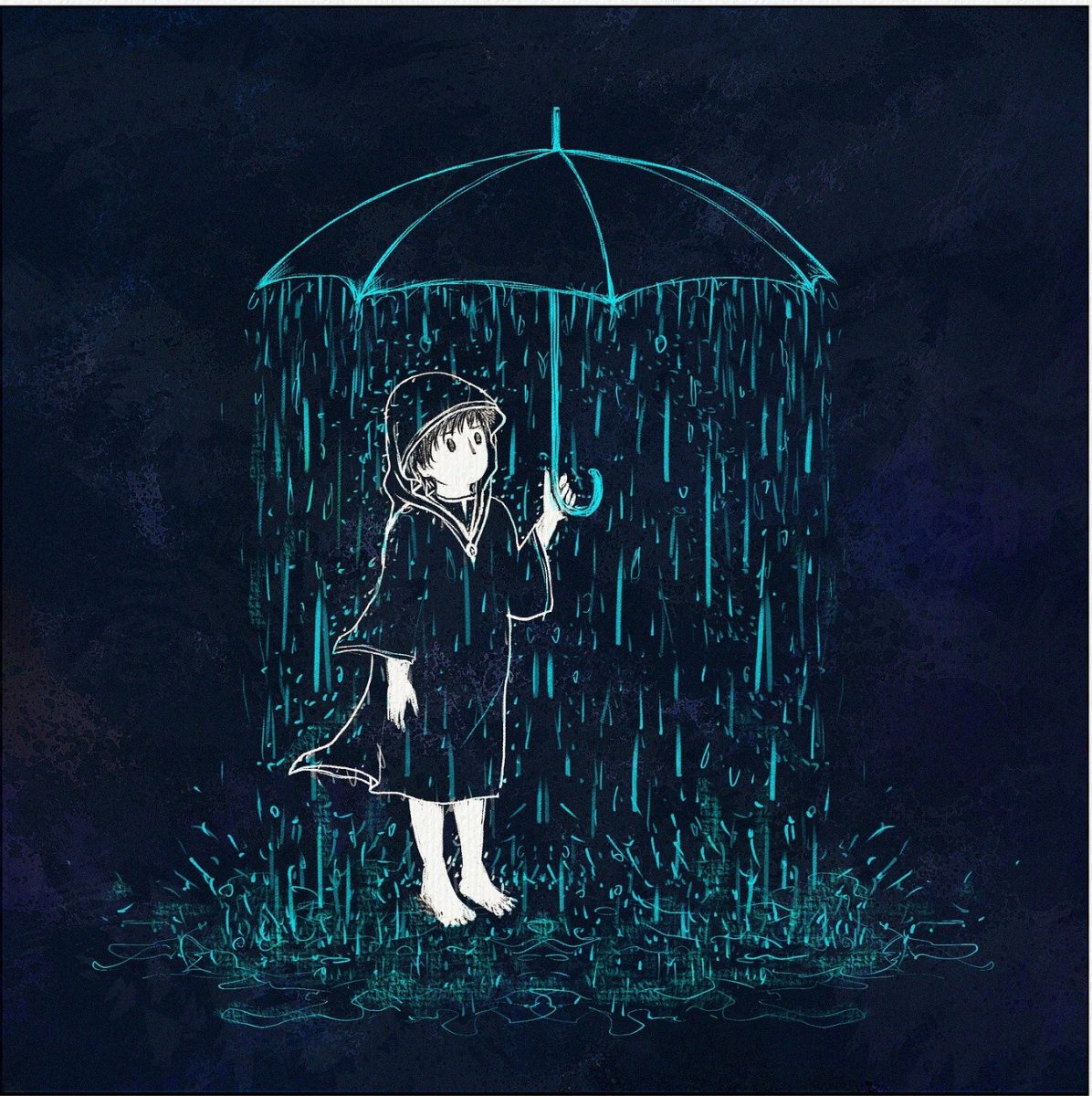Skinamarink: There’s something in the dark
February 18, 2023
Rating: 5/5
(Spoilers Ahead: Trigger Warning for Suicide and Child Abuse )
Not enough people are talking about the recent release of Skinamarink, a horror film that aired on streaming services this January. Directed by Kyle Edward Ball, the movie follows four-year-old Kevin and his six-year-old sister Kaylee, who awake in the middle of the night to find their father has vanished, and so have the doors and windows of their house. Considering most of the film consists of grainy, poor quality, and still motion shots of the home with the occasional moment of characters and dialogue, it hasn’t been rated highly on most platforms. The film, only reaching an hour and forty minutes, required a budget of just $15,000 and received an underwhelming audience score of 44% on Rotten Tomatoes. Yet this film deserves so much more credit than it’s given. An original production falling into the indie horror genre, Skinamarink is truly one of the most eerie and horrifying movies you will ever watch, all while masking a much deeper meaning.
One of the most interesting aspects of Skinamarink is that nothing happens. There is no plot. It’s challenging to create such feelings of intensity and discomfort in the audience while the screen shows you almost nothing of substance. The only sound that continues throughout the movie is static and occasionally distorted or inaudible dialogue, and yet you’ll find yourself watching the entire movie with a blanket pulled over your head. This is due to the film creatively centering itself around the feeling of anticipation. That feeling you get while you’re watching a scene you know is building up to a jump scare? That is what the majority of this movie feels like. The screen shows you prolonged shots of dark corners, staircases, and a slightly unsettling 1930s children’s cartoon. Pairing this with nothing but the sound of intensifying static, and sometimes the sound of the television, you expect something to happen. You expect to see something in the dark corners you’re staring at. You want something to happen just to relieve some of the building tension you feel. But for the majority of the time, you’re waiting for nothing. Your mind starts to play tricks on you, as you try to make out figures that are barely visible because of the poor and distorted camera quality. But in reality, there is nothing there. The purpose of the movie is not to show graphic images or tell a story, but to capture the essence of childhood fear. It encapsulates that childlike fear of the dark. Towards the end, when what’s happening in the house becomes more apparent, that feeling of anticipation makes the ending much more horrifying. That is what makes Skinamarink truly terrifying.
If there’s no plot, then what is the point of the movie, besides evoking fear? Skinamarink inserts seemingly random details into the movie, but when pieced together, they communicate a disturbing message. While Ball chose for the main idea of the film to be up to interpretation, one of the most widely accepted theories is that Skinamarink is an allegory for child abuse. For starters, the first character we hear speak in the movie is the father, who mentions on the phone that Kevin fell down the stairs, but wasn’t badly hurt. In a movie with such minimal dialogue, this comment serves a clear purpose.This wasn’t inserted for no reason; when children are abused, excuses are commonly made for their injuries. Suddenly, the father goes missing, while simultaneously, a strange entity (seen at the very end of the film) takes over the house. In his mind, Kevin has replaced his father with an evil entity because his mind cannot comprehend that his father would inflict such violence on him. Similarly, victims of sexual assault (especially at a young age) suppress traumatic memories of the assault or replace them with a false reality instead. Other details, such as what happens to Kevin’s mom and sister, Kaylee, allude to the fact that the father in this family is abusive. We see Kevin’s mother and father at one point in the film sitting silently on opposite sides of the bed, facing away from each other, representing the strain in their relationship. It is a strain so intense that the mother then takes her own life off camera. Kaylee also meets a tragic fate in one of the most disturbing shots in the movie, where her face is shown for the first time, but her eyes and mouth have been removed. The entity later tells Kevin, “Kaylee didn’t do as she was told.” The removal of these features means that Kaylee cannot see anything or say anything. This likely represents the idea that Kaylee has spoken up about the abuse occurring in her household, and was therefore silenced.
Multiple key scenes in the film reinforce the idea that the father is abusive. The children wake up to find the windows and doors of their house are disappearing and that they cannot leave. When Kevin attempts to call 911, the entity turns the phone into a toy. The children are completely cut off from the outside world. They cannot escape their situation. This all portrays how isolating being in an abusive family can be, especially at a young age. In the last few minutes of the film, we see an upside-down playhouse, on top of a stack of toys, stuck to the ceiling with the words “527 days” on the screen. The children’s toys, and other household items throughout the film, being flipped upside down and stuck to the ceiling represent the turmoil in these children’s lives. Their home, which was supposed to be a safe and nurturing space for them, has turned into a nightmare. For the past 527 days, the abuse they’ve endured has completely altered their childhood. Finally, the film concludes where we can just quite make out the entity’s face looming in the dark, telling Kevin to “go to sleep” like a parent tucking their child into bed. This further suggests that the entity controlling Kevin’s house, his family, and his life for the past 572 days, is his father.
The minor details inserted in Skinamarink, engulfed in an aura of eeriness and intensity, address a much larger and deeper issue than what is explicitly shown. Skinamarink does so little and yet so much in a way very few modern horror films have been able to. It’s complex, it’s different, and it’s terrifying.







































NOARIS • Oct 29, 2024 at 2:17 pm
Spot on! Wise, insightful, and honest interpretation of a subject many shy away from and prefer to sugarcoated as a ‘supernatural horror film’. When in fact, it is very real to countless children.